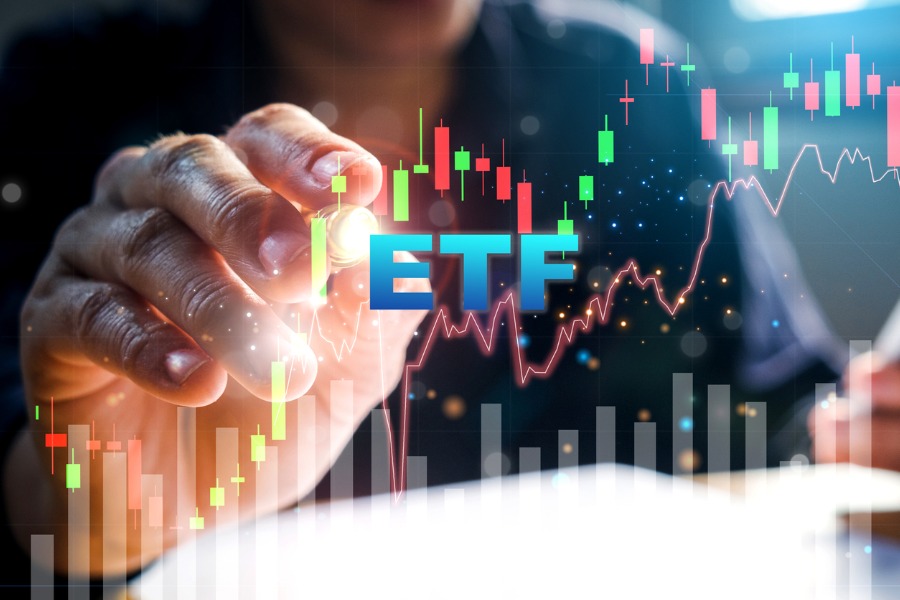

A growing number of investors are turning to exchange-traded funds to navigate volatility and position portfolios for long-term growth, according to Brown Brothers Harriman’s 2025 Global ETF Investor Survey.
With ETF assets worldwide now approaching $15 trillion, Brown Brothers Harriman’s findings also suggest the US market in particular is not only expanding – it’s maturing.
The firm found that 95 percent of global investors intend to increase their ETF exposure over the next year, with US-based respondents showing particularly strong momentum.
Of the US investors surveyed, 50 percent said they plan to increase their ETF holdings by more than 10 percent in the next 12 months. That builds on five years of steady adoption: 85 percent of US respondents reported growing their ETF allocations since 2019, with 22 percent increasing their exposure by more than 25 percent.
“ETF issuers are innovating to meet the sophisticated investment demands of today’s investor,” Tim Huver, managing director on the ETF servicing team at Brown Brothers Harriman, said in a statement. “Investors are seeking the unique features of ETFs to access an expanded suite of product solutions and talented managers to navigate this market uncertainty.”
Interest in actively managed ETFs remains strong. Ninety-seven percent of all respondents plan to increase their exposure to active ETFs this year, up from 78 percent in the 2024 survey. Among US participants, 36 percent expect to raise their active ETF allocations by more than 25 percent. In the US alone, active ETFs accounted for 77 percent of new launches last year, bringing the total number of actively managed ETFs in the US to 1,840.
While lower expense ratios have traditionally been a hallmark of ETF appeal, cost is no longer the leading driver for selection. Just 12 percent of investors cited lower costs as the top reason for using active ETFs, while access to institutional asset managers and investment strategies ranked higher. In fact, expense ratio finished last among ETF attributes for US investors, behind considerations such as strategy focus, liquidity, and fund size.
Strategy remains a leading motivator. Forty-two percent of US respondents identified sector or strategy focus as the most important ETF attribute, followed by liquidity and trading costs. Fund size also continues to matter, with 81 percent of global respondents requiring at least $50 million in assets under management to consider investing. Over half (51 percent) set the minimum threshold at $100 million.
US advisors may also take note of growing demand for risk-managed strategies. Twenty-nine percent of US investors are prioritizing buffered or defined-outcome ETFs, which aim to limit downside while capturing capped upside gains. Fixed income ETFs are similarly in demand, with US investment-grade bond ETFs the most popular fixed income segment among American allocators.
“A lot of investors believe that US equity markets are overvalued and are looking to manage risk accordingly through buffered ETFs,” said Andrea Murray, vice president in the exchange-traded fund services group at BBH.
Alternative asset exposure is gaining traction as well. Thirty-eight percent of US respondents said the growth of alternatives is the most important investment trend to watch in 2025 – the highest percentage of any region. Meanwhile, 76 percent of US investors said they plan to increase allocations to cryptocurrency ETFs in the next year, compared to 59 percent in Europe.
Education and insight remain high priorities. Seventy percent of US investors indicated that access to market research and analysis is the top way ETF issuers can add value. As product complexity grows, issuers are under pressure to support advisors through more informed wholesaling, content, and guidance.

Plus, a $400 million Commonwealth team departs to launch an independent family-run RIA in the East Bay area.

The collaboration will focus initially on strategies within collective investment trusts in DC plans, with plans to expand to other retirement-focused private investment solutions.

“I respectfully request that all recruiters for other BDs discontinue their efforts to contact me," writes Thomas Bartholomew.

Wealth tech veteran Aaron Klein speaks out against the "misery" of client meetings, why advisors' communication skills don't always help, and AI's potential to make bad meetings "100 times better."

The proposed $120 million settlement would close the book on a legal challenge alleging the Wall Street banks failed to disclose crucial conflicts of interest to investors.
Orion's Tom Wilson on delivering coordinated, high-touch service in a world where returns alone no longer set you apart.
Barely a decade old, registered index-linked annuities have quickly surged in popularity, thanks to their unique blend of protection and growth potential—an appealing option for investors looking to chart a steadier course through today's choppy market waters, says Myles Lambert, Brighthouse Financial.
